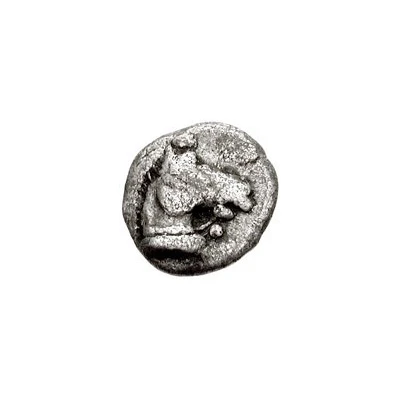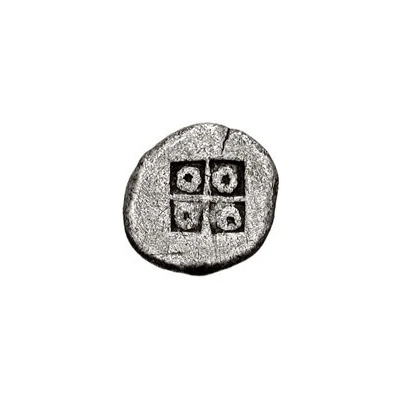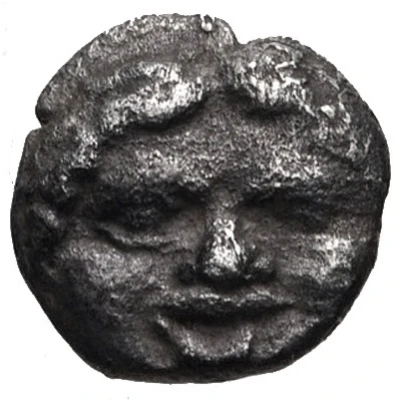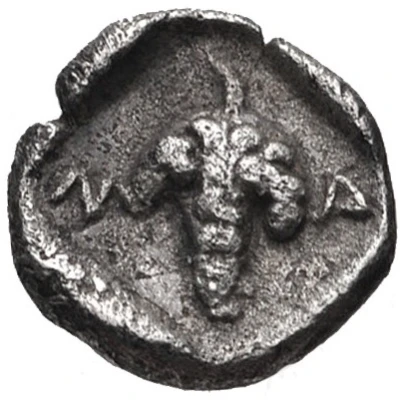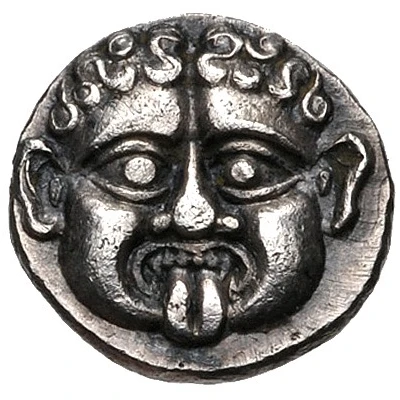
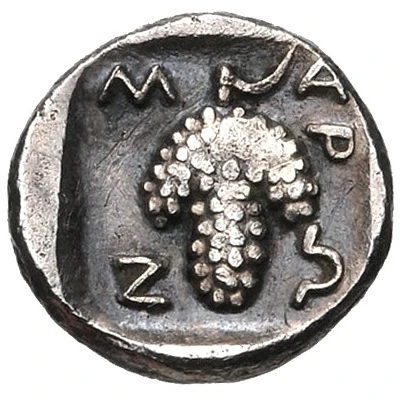

© Classical Numismatic Group, Inc.
Hemiobol 432 BC - 424 BC
| Silver | 0.97 g | 10.0 mm |
| Issuer | Maroneia (Thrace) |
|---|---|
| Type | Standard circulation coin |
| Years | 432 BC - 424 BC |
| Value | Hemiobol (1⁄12) |
| Currency | Drachm |
| Composition | Silver |
| Weight | 0.97 g |
| Diameter | 10.0 mm |
| Shape | Round (irregular) |
| Technique | Hammered, Incuse |
| Demonetized | Yes |
| Updated | 2024-10-10 |
| Numista | N#169816 |
|---|---|
| Rarity index | 100% |
Reverse
Grape bunch on vine within incuse square.
Script: Greek
Comment
SNG Copenhagen –; Traité IV 1465.
Interesting fact
The Hemiobol coin from Maroneia (Thrace) was used as a form of currency in ancient Greece, specifically in the city of Maroneia, which was located in the region of Thrace. The coin was made of silver and weighed approximately 0.97 grams. Despite its small size, the Hemiobol was an important coin in ancient Greece, as it was used to purchase everyday items such as food, clothing, and other necessities. The coin's design featured an image of a mythical creature called a griffin, which was a symbol of protection and strength in ancient Greek culture. The Hemiobol coin from Maroneia (Thrace) is a valuable piece of history that provides insight into the economic and cultural practices of ancient Greece.
Price
| Date | Mintage | VG | F | VF | XF | AU | UNC |
|---|---|---|---|---|---|---|---|
| ND (432 BC - 424 BC) | - | - | - | - | - | - |
Values in the table are based on evaluations by sales realized on Internet platforms. They serve as an indication only for Hemiobol (432 BC - 424 BC) coin.
